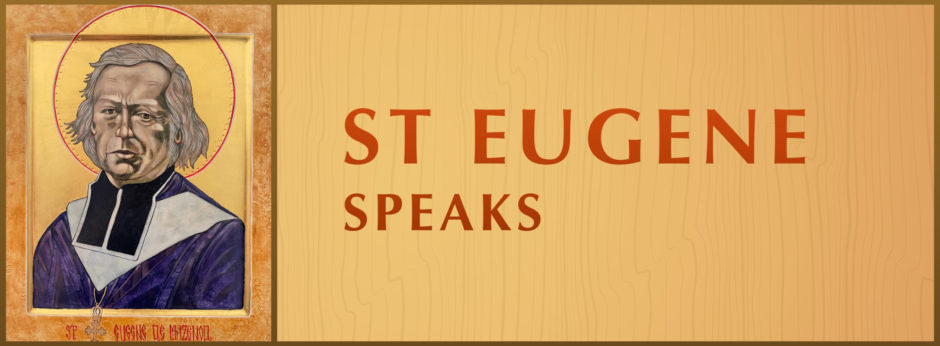Eugene continues to share his first experience of division in Christendom with Henri Tempier:
However, I did not wish to deprive myself of the consolation of saying Holy Mass in this land of infidels, and offered the Holy Sacrifice with intentions you can surmise; I avow it was not without some emotion for after all, to offer the holy victim on this thoroughfare of error, to adore Jesus Christ there, to raise him in the sight of so many rebels, and invoke on them his mercy or, failing that his justice, is worthwhile, especially when one thinks of the past centuries and the present disposition of minds. Nonetheless it would be impossible for me to live in such a place; we left as quickly as possible, continuing on our road.
Letter to Henri Tempier, 26 July 1830, EO VII n 349
A few years later he expressed a more tolerant attitude.
“Despite his intransigence on principles and the harshness of his remarks on Protestantism, Bishop de Mazenod is usually understanding and indulgent towards people. In his letter to the Company for the colonization of the North of Africa, February 4, 1839, after having stated his principles, he writes:
The Church is full of love for all people, regardless of their belief. It loves all those whom God has created in his image and thereby called to the knowledge of the truth. It does all the good it can for them in the temporal order as in the spiritual order […]
However, gentlemen, I do not want to conclude from this that we are obliged, when saying anathema to the errors of Protestants, to exclude them. We must at any rate live with them in charity and be on good terms with them in temporal matters, and with respect to their persons treat them as brothers.
Yvon Beaudoin, “Mgr de Mazenod et les Protestants” in Vie Oblate Life 58 (1999), p 523-524

Some years ago I was introduced to Raymond Mason’s “Illuminated Crowd” – a large sculpture in downtown Montreal. So I went and spent a few days studying and praying it. I do not think of it often these days but in reading and reflecting this morning I am reminded of it.
It shows 65 persons who are of different heritage and age, men, women and children and all appearing to come from different walks of life. They all seem to have a different reaction/response to a large event or a spectacular light. There are families there and people who are quite a lone and they seem to represent every emotion and way of being from inclusive love to exclusion and horror. Love, hatred, violence, wonder, awe – all mixed together. The full range of our humanness.
At first I found myself looking and meeting people that I know, both good and bad, some with whom I was close and others that I would try to separate myself from, keep some space away from them. I seem to be able to laugh and cry with all of them.
On the second day I returned to the sculpture but as I began to focus on each person depicted I found myself looking at my own self, my behaviour and my ways of being – past and present. I admit that on that 2nd day that several times I would start to walk away from that ‘crowd’ only to return a few minutes later. It was uncomfortable at times, as I found my own self being in a way illuminated. It was a humbling experience.
On the last day I went again to spend the morning with myself and the sculpture. It was a time to sit quietly with God and myself in the midst of Montreal’s downtown area. The sculpture called forth many emotions. I ended my visit by going to noon Mass and finding some lunch before returning home on the train. Acceptance, love, forgiveness, gratitude were all gifts given to me during that time in Montreal.
“We must at any rate live with them in charity and be on good terms with them in temporal matters, and with respect to their persons treat them as brothers.” Over time I have changed and softened, learning to treat others as my brothers and sisters, loving them as I do myself. Like Eugene I am so very human – perhaps that is what attracted me to this saint and family he started.